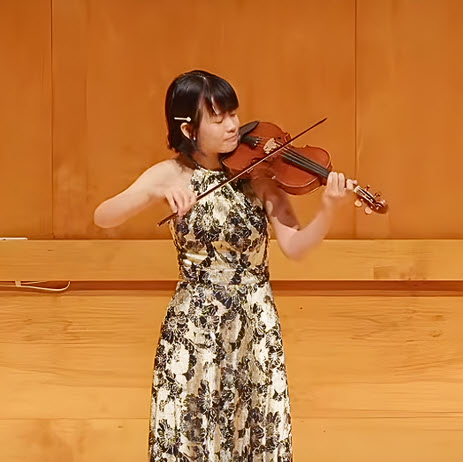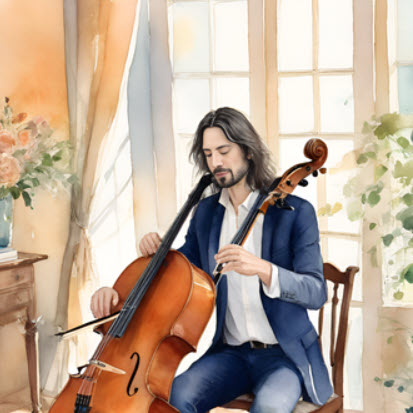by Lee Talner
Published September 2, 2019
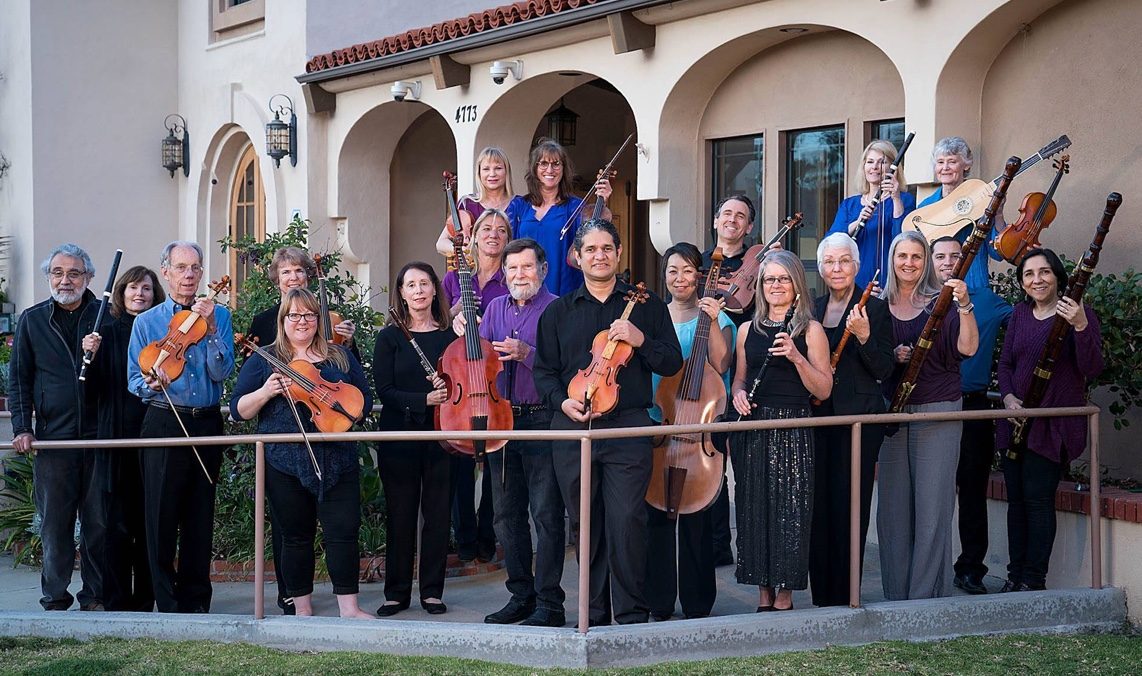
Interest in Baroque music among audiences and musicians continues to grow, with increasing numbers of universities and conservatories offering courses, playing experience, and even entire programs dedicated to historical performance practices. Many universities also host collegia that offer undergraduate and graduate students in music and non-music disciplines the opportunity to play and perform music of the Baroque and earlier periods under the direction of a faculty member. Community amateur musicians are often invited to participate.
Then there’s the community baroque orchestra (CBO), which, as a stand-alone ensemble, is quite distinct from the college and university collegia.
The growing number of amateur instrumentalists interested in Baroque music in the U.S. and Canada has prompted the creation of community-based ensembles that provide performing outlets. At the moment, this largely seems to be a West Coast phenomenon, with CBOs active in Los Angeles, San Diego, the San Francisco Bay Area, and Seattle; another, Trillium Community Baroque Orchestra, is set to be launched by violinist Adam LaMotte in November in Portland, OR. But a new group also has just started in Montana, and others may exist.
In a sign that the field is growing, Early Music America and the San Francisco Early Music Society will host a Community Baroque Orchestra Play-In Day during the Berkeley Festival & Exhibition, June 7-13, 2020. (Individuals and ensembles interested in participating are invited to contact EMA by sending an email to info@earlymusicamerica.org with “Community Baroque Orchestra Play-In Day” in the subject line.)
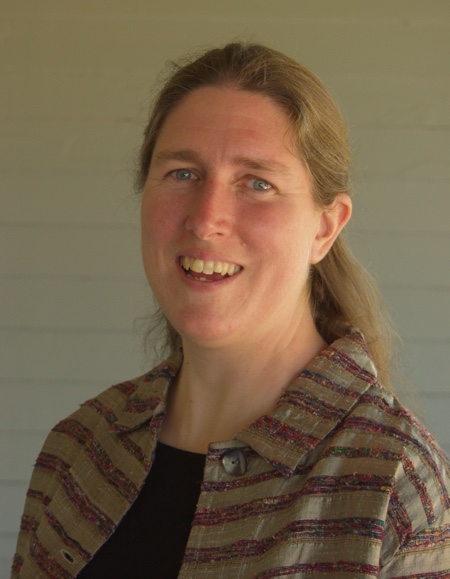
Although the focus here is on the baroque orchestra, North America is home to other community organizations, such as Seattle’s Sine Nomine ensemble, which concentrates on vocal-choral repertoire with or without a continuo component.
Among the CBOs is Kensington Baroque Orchestra (KBO), based in San Diego. The main issues that surfaced during its evolution — and are likely to be faced by any similar ensemble — were the search for a music director; recruitment of players; management of finances, including fee for the music director; choice of repertoire; instrument, string, and bow requirements; and rehearsal venue and scheduling arrangements. Although there are many commonalities among community-based ensembles, there are also differences, in large part related to the personnel/instrumentation available. One size does not fit all.
The idea to form a CBO for amateurs in the San Diego region was first discussed in 2014. An amateur viola da gamba player, I was in the process of resettling to San Diego from Seattle, where I had played in the New Baroque Orchestra (NBO), a community baroque orchestra directed by Linda Melsted. Gary Payne, a San Diego professional photographer, amateur baroque mandolin player, and budding baroque violinist, was intrigued to learn about my experience with NBO in Seattle. From canvassing musician friends about the prospect of forming a local period-instrument ensemble, enough players expressed interest to warrant pursuing the idea.
About the same time, Gary met Ramón Negrón, an accomplished modern viola player with conducting experience. Ramón had become interested in historically informed performance of Baroque music, and he eagerly embraced the prospect of leading a baroque orchestra.
With the key elements in place, the first organizational meeting and rehearsal took place in March 2015. At inception, there were 14 players on the following instruments: three violins, two violas da gamba, one keyboard, one baroque guitar, three flutes, two recorders, and one bassoon. Ramón led from his viola. Rehearsals were held Monday evenings at Kensington Community Church in San Diego. The first KBO public concert on May 15, 2015, included works by Telemann, Bach, Vivaldi, and Purcell. Since then, the number of players has ranged from 14 to 20. Now in its fourth year, KBO has given an average of four performances per season.
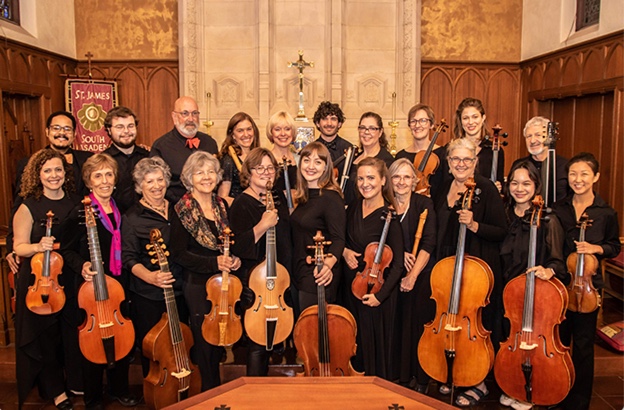
Other CBOs have come to life — before and after KBO. Recorder player Frances Blaker formed the Bay Area Baroque Orchestra (BABO) in 2008 as a one-day playing session that proved so popular that she began planning eight-week sessions two or three times throughout the year. “In contrast to some other such groups, BABO runs in these short sets — anywhere from 5 to 8 weeks in length,” says Blaker. “During each set, BABO prepares three to four pieces and ends the set with a public performance.” Blaker conducts the free programs, which contain a small number of pieces “to enable the orchestra to become more familiar with each work than if we had to cover a full program’s worth of pieces.” She re-orchestrates some compositions “to include wind players when appropriate in a given set — in the Baroque spirit of fitting the music to the forces.”
Los Angeles Baroque (LAB), which gives three concerts per season, was founded in 2016 by violinist Lindsey Strand-Polyak and cellist Alexa Haynes-Pilon, who serve as artistic directors. The ensemble is string-based, though all instrumentalists interested in learning about and playing in Baroque style are welcome to join, according to managing director Joan Lounsbery and marketing director Zen Edwards. The current group comprises 20 members: 14 strings (violins, violas, cellos, viols), three recorder players, one traverso player, a theorbist, and a harpsichordist. Among the personnel are professional musicians, university students, and community musicians who have played modern instruments. Strand-Polyak and Haynes-Pilon encourage members to purchase Baroque bows and use gut strings.
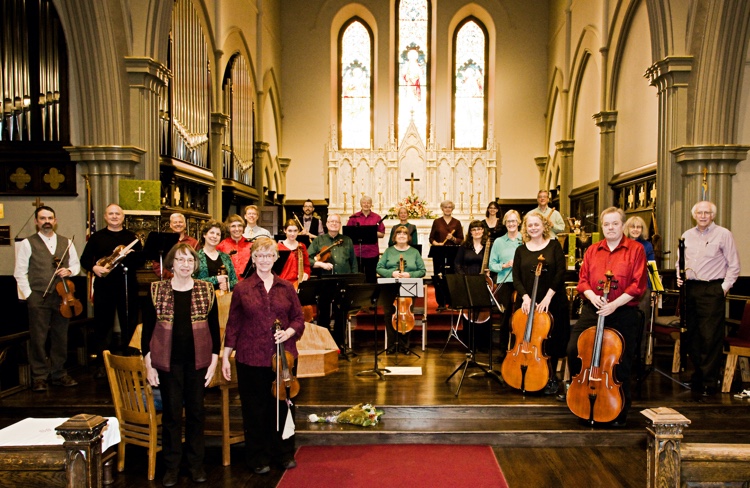
Seattle’s New Baroque Orchestra began in 2004 as a community ensemble under the auspices of Early Music Seattle. For the 2019-2020 season, the ensemble will be led by baroque cellist and gambist Caroline Nicolas, who succeeds Linda Melsted. The orchestra presents two free programs per season, rehearsing for about 10 weeks before a public performance. “All players pay a tuition for each program, once in the fall and again in mid-winter,” says viola da gamba player Ellen Seibert. “The question of baroque vs. modern instruments is met by agreeing to play the music at A 415 pitch, encouraging violinists and cellists to use baroque bows but not insisting on gut strings. Often violinists choose to move gradually to gut strings, but it is hard to ask cellists to change if they use the same instrument for music at 440 pitch most of the time.”
Berkeley Baroque Strings, in its sixth season, is an affiliate of the San Francisco Early Music Society. Music director and baroque violinist Katherine Kyme, a founding member of Philharmonia Baroque Orchestra, American Bach Soloists, and the New Esterhàzy Quartet, “sees it as a core mission of the orchestra to feature members of the orchestra in a concert set each year,” says board member Charlotte Gaylord. “Anyone in the orchestra who wishes a concerto opportunity is given one.” The 40-member ensemble consists of string instruments, all played with gut strings and Baroque bows, though “several members of the group play other instruments as well, so soloists have included recorder, flute, and tenor, among others.” The orchestra has performed at the Berkeley Festival & Exhibition and in a Fringe concert at the 2019 Boston Early Music Festival.
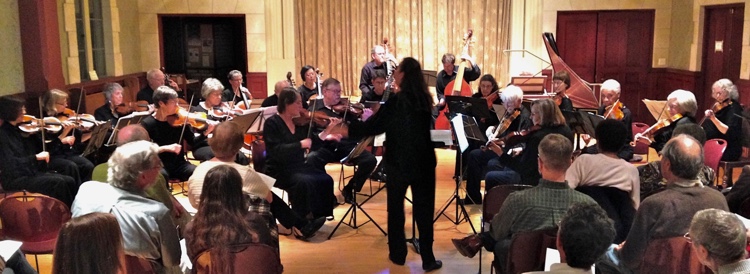
The newest ensemble of this kind was created recently by Bitterroot Baroque, which Alex Shaffer founded in 2015 in Hamilton, MT. Begun as a presenting organization, it soon offered the Montana Cantata Project featuring professional singers and instrumentalists and added workshops before the concerts. “Only just this summer, we moved to meeting regularly and calling ourselves an orchestra,” says Shaffer, president of Bitterroot Baroque. The group plays at an Episcopal church “exclusively at 415 entirely with Baroque bows and mostly gut strings.” The initial instrumentation consists of one baroque flute/recorder (Shaffer), one recorder, four violins, two violas, one gamba, four cellos, one bass, harpsichord, and chamber organ. The players — a mix of professionals and amateurs — come from many parts of Montana and nearby Idaho. “Since Montana is so sparsely populated, we need to draw musicians from some distance away; we are probably more accurately a regional orchestra than a community one…There is no local professional player [here] who lives in the world of baroque performance, and that is why we are so dependent on frequently bringing in baroque specialists to learn from.”
Bringing together professional and amateur musicians is one of the prime missions of community baroque orchestras. In its first year, the Kensington Baroque Orchestra included a number of professionals with substantial early-music experience, such as violist-conductor Ramón and violinist Sandra Stram, a string teacher with the San Diego Unified School District and a freelance musician. Several other professional modern-instrument players were also part of the founding ensemble: Pama Lynn Broeckel, a violinist and teacher; Sayuri Yamamoto, a viola da gamba/violone player, string teacher, and double bassist who has performed with the San Diego and Hawaii symphony orchestras; and Shannon Yandall, a viola player and teacher.
Leyla Zamora, contrabassoonist and bassoonist with the San Diego Symphony, joined KBO in year three playing baroque bassoon. Most recently, Marianne Pfau, a professional baroque oboist and recorder player and professor of music at the University of San Diego, joined KBO to play alongside one of her baroque oboe students. Harpsichordist Paul Carmona, church organist and professor emeritus of humanities, philosophy, and religious studies at Cuyamaca College, joined the orchestra in 2018.
“Being part of the KBO community is what I cherish most,” says Carmona. “Through our participation, we celebrate the collective joy of music-making and connect with wonderful colleagues whom we otherwise might never have met.”
Lee Talner, MD, is a passionate advocate for early music, having served on boards of Seattle Baroque Orchestra, Seattle Early Music, Early Music America, and the Viola da Gamba Society of America. He is board vice president of Bach Collegium San Diego and co-founder of San Diego’s Kensington Baroque Orchestra.


